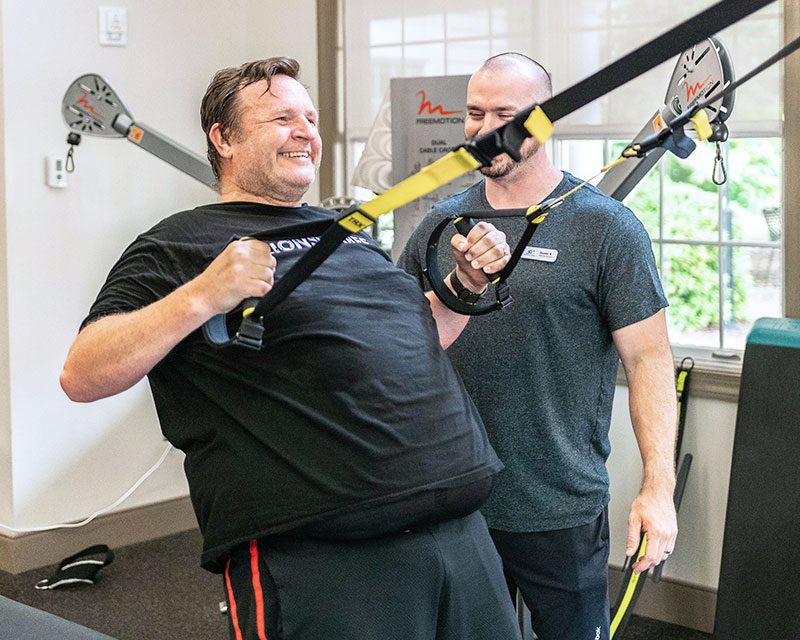When it comes to hunger, can you tell the difference between a psychological need for comfort and a biological need for nourishment? Emotional hunger can be quite powerful. As a result, it is easy to mistake it for physical hunger. And, let’s be honest—eating is an easier and simpler solution than meeting complex psychological needs. However, emotional eating doesn’t solve emotional problems. So even if you eat, you are not likely to feel satisfied because emotional hunger signals indicate that you have psychological needs that are not being adequately addressed.
If you find that you are constantly craving food, it can feel like you are playing your own version of the Hunger Games. However, there are some clues you can look for to help you to tell physical and emotional hunger apart.
- Emotional hunger comes on suddenly. It hits you in an instant and feels overwhelming and urgent. Physical hunger, on the other hand, comes on more gradually. First you may notice a pang in your stomach and an hour later it growls. However, the urge doesn’t feel as dire or demand instant satisfaction (unless you haven’t eaten for a very long time).
- Emotional hunger craves specific comfort foods. When you’re physically hungry, almost anything sounds good, and you are open to different foods (including healthy foods or ones you may not normally like). Emotional hunger is specific, and often it involves cravings for fatty foods or sugary snacks that provide an instant rush. You feel like you need that cheesecake or pizza, and nothing else will suffice.
- Emotional hunger is experienced “above the neck.” Rather than a growling belly or feeling of emptiness in your stomach, an emotionally-based craving begins in the mouth and mind and is hard to get out of your head. It tends to focus on specific textures, tastes, and smells. Physical hunger is experienced in the stomach as a sensation of gnawing, rumbling, emptiness, or pain.
- Emotional hunger is URGENT. Because the function of emotional eating is often to escape, distract, or numb painful emotions, emotional hunger has a sense of urgency to it to ease emotional pain immediately. However, physical hunger can wait. Although it signals a need to eat soon, it is patient and does not require immediate satisfaction.
- Emotional hunger is paired with (usually upsetting) emotion. Your boss is in a bad mood. You had an argument with a friend. You are stressed about a deadline at work. Emotional hunger occurs in conjunction with emotion-inducing situations. Physical hunger occurs because it has been several hours since your last meal.
- Emotional hunger is often mindless. Emotional eating tends to be absent-minded or automatic. Before you know it, you’ve eaten a whole bag of chips or an entire pint of ice cream without really paying attention or fully enjoying it. When you are eating in response to physical hunger, it usually involves more deliberate choices and awareness of eating.
- Emotional hunger isn’t satisfied once you’re full. Because emotional eating usually arises from a desire to cover up or distract from difficult thoughts or emotions, it often doesn’t stop in response to feeling full. Physical hunger, on the other hand, is satisfied once the body is nourished, so there is no need to continue eating.
- Emotional hunger may lead to feelings of regret, guilt, or shame. When you eat to satisfy physical hunger, you are not likely to feel guilty or ashamed because you recognize that you are simply giving your body what it needs. Paradoxically, with emotional eating the very behavior that is intended to help you feel better in the short term often results in feeling worse in the long term.
We all use food at times to celebrate or in moments of distress, but when food is your primary coping mechanism it can create an unhealthy cycle in which the underlying feeling or problem never gets addressed. If you find that your hunger cues are more emotional than physical, try these strategies to help break the cycle of emotional eating:
Identify your triggers. Self-monitoring is key to identifying triggers for emotional eating. Tracking not only what you eat, but how you are feeling and what was happening at the time can help uncover emotional eating patterns. For example, you may notice that you tend to head straight for the vending machine every time you have a meeting with your boss. As you become aware of these patterns, it opens up new possibilities – such as taking a walk or talking with a co-worker instead.
Take a mindful pause when cravings hit. Delay eating for a moment and allow yourself to be fully present. Use this time to check in with yourself. How are you feeling? What cues do you have from your body? Try rating your hunger on a scale from 0 (not at all hungry) to 10 (starving). Are you physically hungry, and if so, how much? Identify what is going on with you emotionally. Are you feeling lonely? Sad? Anxious? Bored? Pausing gives you the opportunity to realize you have many choices for handling your feelings (only one of which is eating). Even if you eat, you’ll have a better understanding of why you did.
Expand your toolbox. If food is the only way you know how to cope with difficult emotions or daily stressors, you may find yourself constantly turning to food to feel better. Try making a list of alternative coping strategies that give you similar comfort. Consider other distractions (playing a computer game, reading, knitting, or another hobby), calming activities (listening to soothing music, deep breathing, looking at photos), or coping directly with the problem (problem-solving, talking through your concerns with a friend, come up with an action plan).
Support yourself with good self-care. Cultivating healthy lifestyle habits can help you cope with challenges without emotional eating. However, when you are already feeling exhausted and overwhelmed, life’s inevitable curveballs are more likely to send you to the nearest pizza parlor or ice cream shop. For example, when you are sleep-deprived, ghrelin (the hormone that stimulates appetite) goes up and leptin (the hormone that signals the brain when you are full) goes down, making it harder to resist cravings. Including exercise as a part of your daily routine can help improve mood and is a powerful stress reliever. Making time for relaxation can help you to decompress from the day and recharge, leaving you less vulnerable when things don’t go as planned. And spending time with friends and connecting with others helps buffer the effects of stress.
For more information on tuning into hunger and appetite cues and managing emotional eating:
Albers, S. (2013). EatQ: Unlock the Weight-loss Power of Emotional Intelligence. New York, NY: HarperOne.
Craighead, L. (2006). The Appetite Awareness Workbook: How to Listen to Your Body and Overcome Bingeing, Overeating, and Obsession with Food. Oakland, CA: New Harbinger Publications.
Kristeller, J. (2015). The Joy of Half a Cookie. New York, NY: Penguin Random House.
Virtue, D. (1999). Constant Craving A-Z. Carlsbad, CA: Hay House.
Was this helpful? You might also like: Feeding the Real Need, 7 Habits of Emotionally Intelligent Eaters






